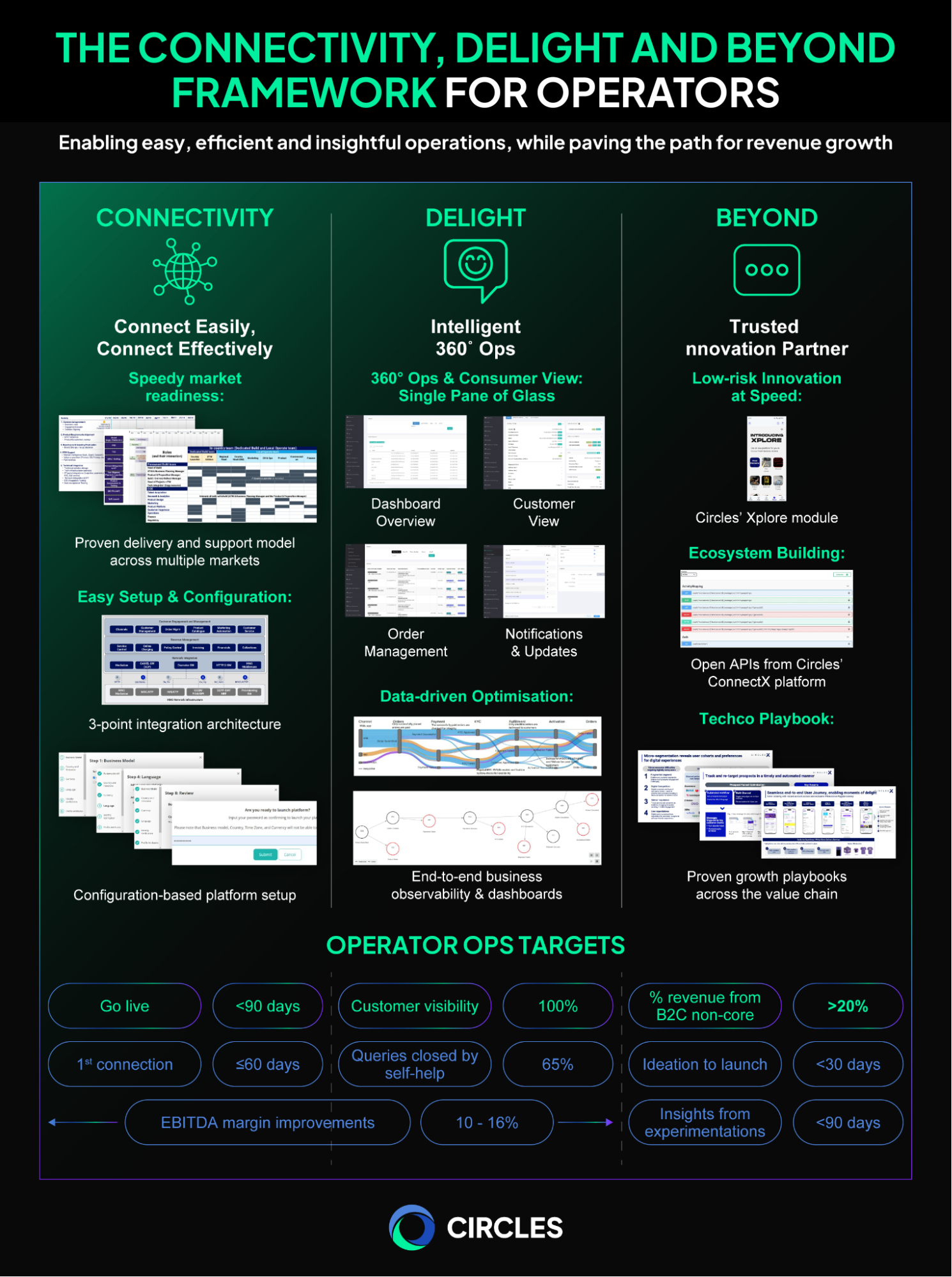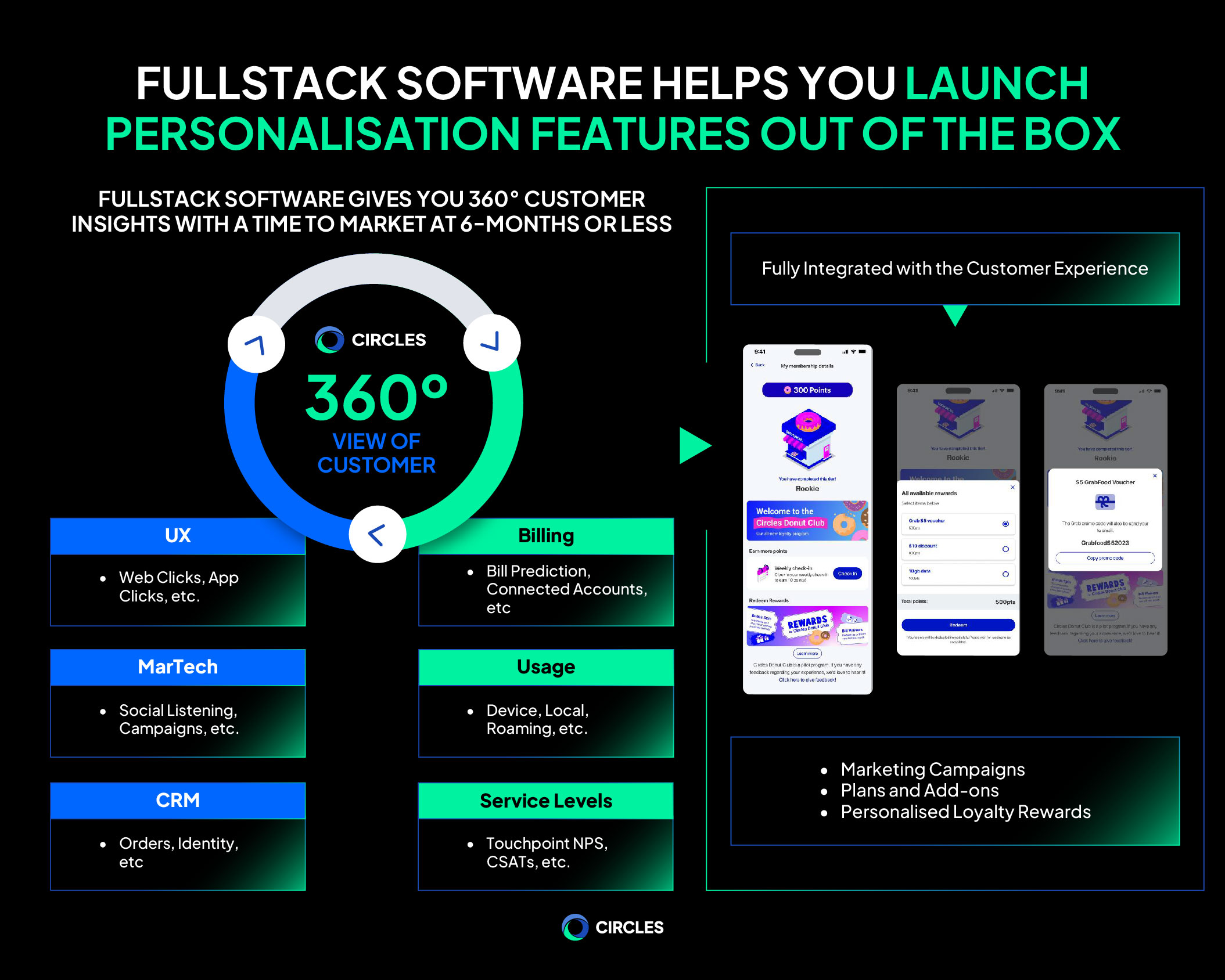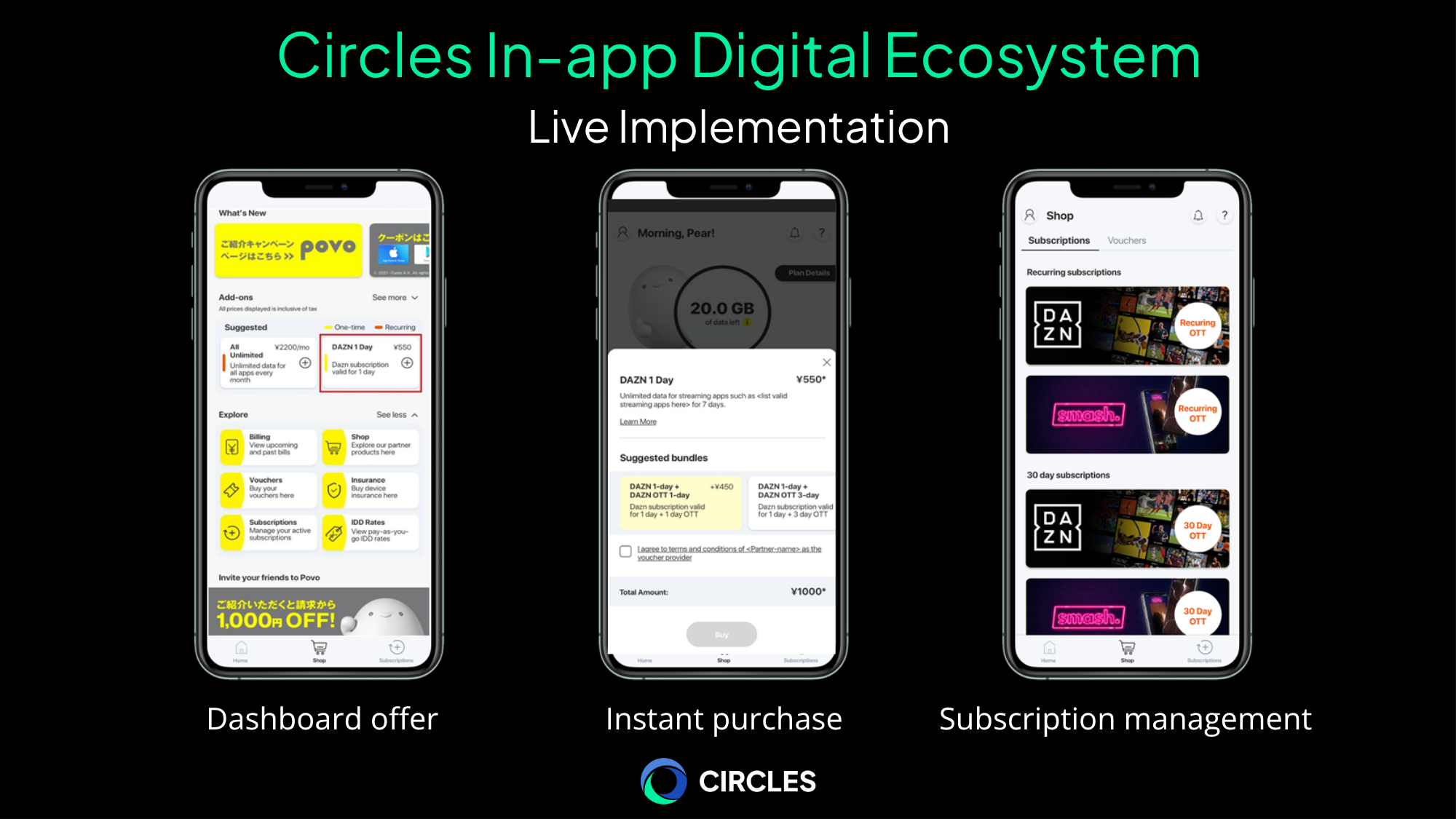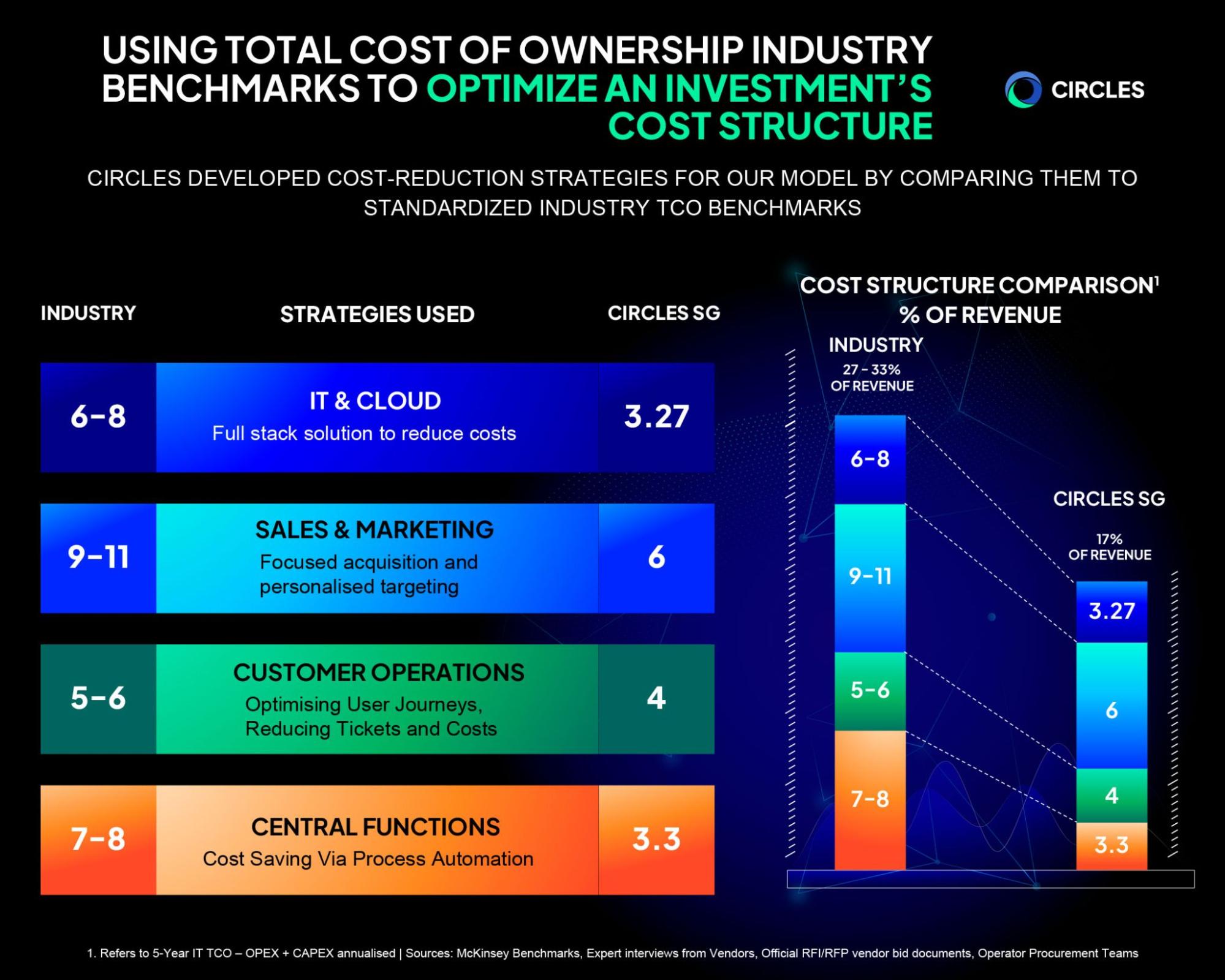.webp)

How Greenfield DMO Brands Can Support US Telco Super Segmentation
In the previous article on US telco price freezes, it was outlined how major U.S. telcos are shifting their strategy toward long-term retention. This shift was marked by a trend of three- to five-year guarantees and price freezes along with complex cross-product bundles across telcos.
But in an era of static average revenue per user (ARPU) and hyper-competitive pricing, these defensive tactics could entrench sameness.
Given enough time, bundles could end up being similar, resulting in less differentiation and weaker future-proofing for US telcos.
That’s why the next offensive move lies in building speedboat digital mobile operator (DMO) sub-brands. Speedboat DMOs are purpose-built to uncover, learn about and tailor offers to specific, high-value customer segments.
All these learnings can support the flagship brand which is more akin to a supertanker. Flagship brands carry a lot of value but cannot change their direction as quickly, making them risky choices for rapid experimentation. On the other hand, smaller speedboat brands can help telcos take that risk.

When built and supported correctly, speedboat brands can be agile enough to innovate quickly and battle competition through experimenting with segments, offers, and brand messaging. The results of these experiments will help chart the future for the flagship supertanker.
This article will cover how using the right full-stack software can support a multi-brand super segmentation telco strategy.
Why Greenfield Software Can Support New Digital Brands
The Strategic Imperative: Results that Matter
Launching a greenfield DMO brand is an opportunity to escape the gravity of legacy IT and organizational complexity. Many telcos use new sub-brands as test beds to test out new software, such as what KDDI did with povo to launch the first digital sub-brand in Japan.
To gain richer insights into digital native super segments, the speedboat DMO brand should use a tech stack built for agility, learning, and rapid scale. All of this is part of Circles’ Connectivity, Delight, and Beyond playbook that focuses on three core pillars:

When done well, software and strategies built on this framework can achieve the following outcomes for super segment telco brands:
Reduced time to market for both the brand and software deployment
Reduced time to market enables telcos to launch more sub-brands faster. Utilizing pre-integrated full-stack software designed to support fully digital customer experiences right out-of-the-box helps telcos launch new brands quickly.
Partnering with telco SaaS providers who have built their software from a single code base enables operators to launch multiple brand instances on the same software foundation, while still receiving consistent updates and support.
Customer engagement, stickiness, and scalable offers
Customer engagement and stickiness comes from building an engaging brand that provides offers that meet their customers’ wants and needs.
In the case of targeting digital native subsets, the new brands need to provide a digitally native customer experience powered by 360° consumer insights. A fully-integrated tech stack can collect information from multiple touch points while having a martech stack that can launch personalized campaigns based on real-time intelligence.
These also need to be supported by a robust API-powered partnership ecosystem that lets digital brands rapidly onboard, launch, test, and tailor third-party offers for the selected super segment.
Operational efficiency driven by pre-integration and automation
With a large number of brands and experiments, the cost and time savings provided by greater operational efficiency will reduce the risk and allow for more digital sub-brands to be run at once. This is where the mobile virtual network operator (MVNO) model, with its cost effectiveness, comes in.
Telco software built on microservices and pre-integrated with all the tools needed for high-quality digital customer experiences helps operations teams save time and reduce costs.
Further time savings can be gained by having the tech stack be highly configurable by those who need it most, like product managers and marketers. This way, newer brands can both have a lower total cost of ownership (TCO) compared to legacy brands while enabling leaner operations teams who can focus on money-making projects.
Reduced Time to Market
Rapid Deployment Powered By a Pre-integrated Software Suite: Deployment Time Case Study (e.g. KDDI’s povo2.0)
In a low-subscriber-growth market such as the US, the faster a DMO sub-brand is launched, the sooner the feedback loop and profits can start rolling in. Operators will gain more time to rapid A/B test brands, offers, and messaging which is critical to unearthing and building resonance with new segments.
KDDI’s povo digital brand was able to shift from its older software to a new greenfield tech stack in just 16 weeks despite travel restrictions during the height of COVID. By shifting to this software, povo could now rapidly roll out personalized products and experiences. This successful shift achieved:
You can read the full povo case study here.
A clean-slate full-stack software platform minimizes integration effort and lets engineering focus on feature velocity, not system stitching. Traditional platform providers rely on fresh integrations with external software vendors to provide the features that digital natives expect. This creates complex integration layers that must be managed every time a new update is required.
All this complexity can be solved by using a platform that is pre-built and pre-integrated with end-to-end digital telco functionality out of the box. This cuts down the set up period and reduces the maintenance costs when running the DMO sub-brand.
Circles’ platform is built for deployment flexibility for digital-native telco operational and regulatory needs. It is deployment agnostic and can support cloud, on-premises and hybrid deployments.
In povo’s regard, the software platform came pre-integrated with digital user experience, martech, digital engagement, digital BSS and data analytics layers all fully available.
Highly Configurable Software Provides Much Needed Agility
Beyond a longer set up time caused by complicated integration layers, traditional software approaches impact updates and product launch timings too. Traditional approaches require the tech team to coordinate with a large vendor ecosystem, with each vendor providing different pieces of the software. Navigating this ‘spaghetti’ of vendors and integrations each time will slow down the launch of new campaigns and products, adding layers of complexity and time cost.
Highly configurable software empowers telco teams to launch and adjust programs without tech-team delays. This agility cuts down weeks of lead time, accelerates campaign rollouts, and enables faster learning about super segments. It also frees up engineering capacity to focus on innovation and higher-value initiatives.
With experience running DMO brands in Singapore such as Circles.Life and working closely with partners in Indonesia, Japan, the Middle East and Latin America, Circles has focused on making its software configurable by multiple business users:
By removing admin layers, these various stakeholders can respond faster with updates to campaigns, offers and even product launches. All this speed needs to be built on deep learning, which the right software suite can support.
Agile Learning for Customer Engagement and Stickiness
On top of rapidly launching the brand’s software platform, providing an agile and adaptable brand experience that caters to customers based on newly learned insights is key.
The software that supports greenfield DMO sub-brands must offer the flexibility needed to adapt quickly and scale effectively. This means enabling the launch of rapid updates, campaigns, and offers in response to real-time insights.
Just as importantly, it should support a partnership ecosystem where new partners can be onboarded seamlessly to test and deliver compelling experiences for high-value super segments.
Fully Digital Data-Driven Customer Experiences
With personalization at the heart of the super segmentation strategy, enabling real-time data-driven customer engagement is key.
The telco software selected for the greenfield DMO sub-brands should ideally come with a pre-integrated data platform to power these capabilities:

Circles applies this principle by supporting speedboat DMO brands with a 200+ variable data lake that consolidates data from within and outside the telco ecosystem. This breadth of information allows for accurate reports that power lead generation and nurturing, personalized journeys and product recommendations, loyalty campaigns, and churn reduction initiatives.
At Circles.Life, a Circles owned DMO brand, an upsell campaign was built around a segment of Spotify listeners who were active every Friday at 1AM. With this info, the campaign to send them a Spotify streaming bundle around that time saw around a 15% improvement in open rates and 102% improvement in push notifications click rate.
The software suite also comes with multi-stage retargeting based on purchase intent and data usage habits which earned the following results:
On top of marketing insights, offering non-core services is vital to super segment bundling as well.
Monetize Beyond Connectivity: Embedded Partner Ecosystem
Telcos are no strangers to diversifying ARPU by offering non-connectivity services such as Netflix for entertainment or loyalty rewards such as shopping discounts. But while normal bundling strategies go for breadth, specialized bundles can offer a deeper suite of services tailored to the target audience’s preferred digital lifestyle. Listening to the target audience and providing the right services that they love will strengthen brand affinity.
With a wide range of services available, a partnership ecosystem that lets telcos rapidly onboard, launch, and test third-party non-connectivity services such as e-commerce and entertainment is required.
One working example of these ecosystems is Circles Xtend OpenAPI platform. Through this, third-party services can be offered through an e-commerce platform built into the telco digital app. Ecosystems that are built the right way will be able to launch these services with minimal architectural disruption. This can be seen in KDDI’s povo2.0 which offers DAZN entertainment:

Rapid deployment, a pre-integrated and robust data platform, and a martech stack that can adapt its campaigns and third-party offers on the fly can all position telcos to succeed in their super segmentation strategy. But this process also needs to be cost effective as well.
A Lower TCO, Powered By Telco SaaS, Supports A Multi-brand Strategy
Launching and supporting multiple telco sub-brands will require a lot of financial investment. Fortunately, building these as fully digital MVNO can provide savings as no physical storefronts and their supporting manpower are required.
The MVNO model’s operating expenditure (OPEX) savings can be further enhanced via a single vendor approach:

This single vendor approach leads to higher margins and greater capital efficiency. From a marketing standpoint, it means fewer customer touchpoints lost to poor experience or customer data lost in silos. For CTOs, a single vendor approach means more maintainable, scalable operations.
Strategic Impact: De-Risk Transformation, Unlock Growth
A full-stack clean slate approach, delivered by a single partner creates a firm foundation for telco super segmentation. By partnering with a vendor that offers pre-integrated data platforms and martech stacks, new brands can be launched with a time to market of just a few weeks.
This model also offers a lower total cost of ownership compared to traditional setups. As a result, telcos can run multiple greenfield flanker brand experiments in parallel without overextending budgets or internal teams.
And because Circles powers everything from billing to branding, personalization to partnerships, it creates a true testbed for the next growth model.
In a world where 70% of digital transformations fail to deliver value, greenfield DMOs represent a lower-risk, higher-reward path to innovation.
With Circles, you’ll get a partner who provides field-tested software, proven brands, and practiced execution to give you sustainable outcomes.
Circles has launched:
Each brand was built to uncover digital native super segments and each brand proved the power of starting fresh.
Circles is ready to help U.S. telcos do the same. Let’s build a brand made just for your next wave of customers.
